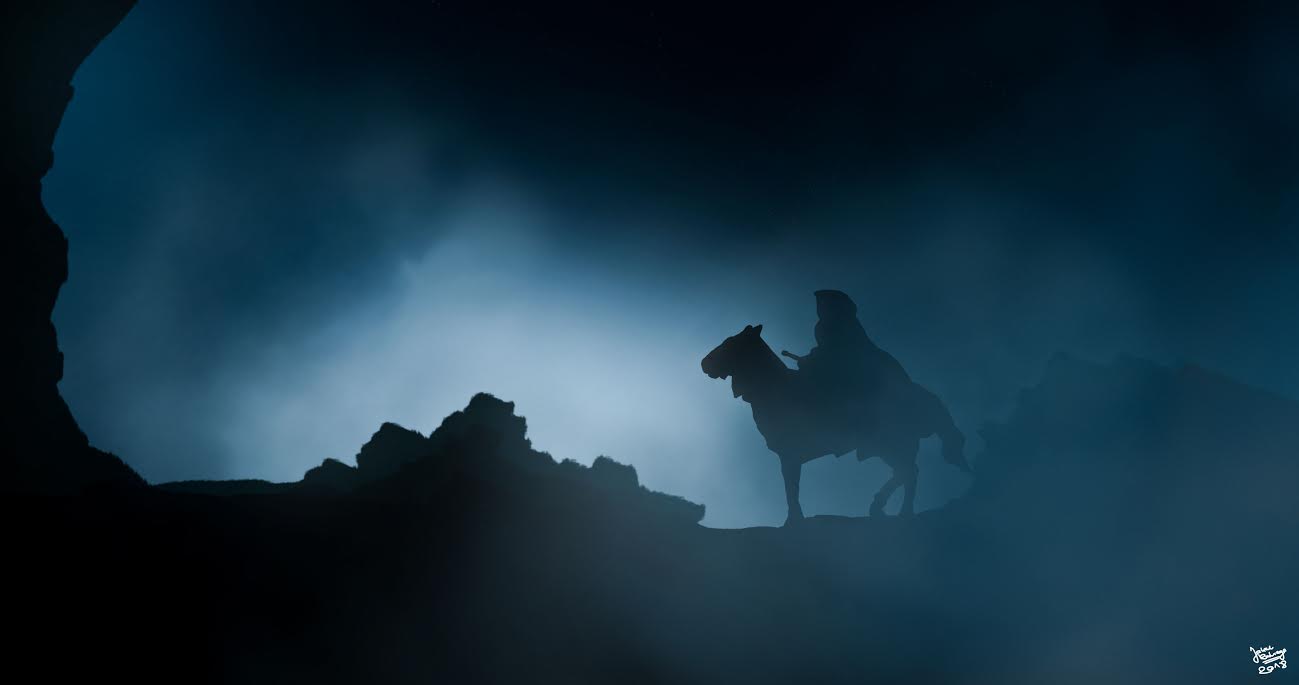
When dark times are upon us, we need support to sustain us through the long night. The myths and great legends of our cultural heritages provide tales of courage and heroism, beauty and sacrifice, and offer an archetypal pattern to follow in our own lives. Far from escapism, the literary imagination can carry us towards wise ways of taking on seemingly unsurmountable challenges, rebirthing ancient knowledge into new times and situations.
As the weight of the world seems only to grow heavier, I invite you to join me on a journey to an imaginal time that resembles our own more and more by the day. After a hiatus last year, it is my honor to offer for the third time my Nura Learning course Journey to the Imaginal Realm: Reading J.R.R. Tolkien’s The Lord of the Rings. Whether you are new to Middle-earth or are familiar with its well-trod paths, we welcome you to join our literary fellowship, traveling through Tolkien’s chapters in good company. We depart on our journey on the autumn equinox, Wednesday, September 22—a day affectionately known as Hobbit Day.
What does it mean to be a Ring-bearer in such times? What humble heroic role do we each have to play in our own fellowship? I am sure many of us are asking the same questions as Frodo, wishing such events need not have happened in our time. But we can remember, as the wise Gandalf himself says: “…so do all who live to see such times. But that is not for them to decide. All we have to decide is what to do with the time that is given us.”
Learn More and Register
Course Description
The Lord of the Rings by J. R. R. Tolkien has been a beloved story to several generations since its publication in the mid-1950s. The story has a timeless quality to it, and engages with a complex struggle between good and evil, death and immortality, power and freedom. The Lord of the Rings blends otherworldly romance with the high rhetoric of epic mythology, at times interwoven with the internal depths of the nineteenth century novel and the political climate of the twentieth century. As Tolkien’s close friend and colleague C. S. Lewis once said: “Nothing quite like it has been done before. This book is like lightning from a clear sky . . . here are beauties which pierce like swords and burn like cold iron.”
The Lord of the Rings is a text treated by many as a sacred text, one to be returned to year after year, or read aloud with loved ones. The Lord of the Rings has become a myth for our time. This course, now in its second year running, offers a journey through Tolkien’s magnum opus in a community of learning, guided by a scholar who has spent more than two decades engaging Tolkien’s writings and artwork. This course is designed both for newcomers to Tolkien’s narrative, and for veteran travelers through Middle-earth’s many realms. Together we will explore the grand themes and hidden nuances of Tolkien’s epic story, connecting The Lord of the Rings to the larger mythology of Middle-earth, and situating Tolkien’s process of writing within his own powerful experiences of the imaginal realm.
To learn more and register, please visit: Nura Learning: Journey to the Imaginal Realm



 This book is the culmination of my love and devotion to Tolkien’s work, shaped by many years of study into the nature of imagination and a deep exploration of the imaginal realm. The book was born out of lectures created for the course I taught through
This book is the culmination of my love and devotion to Tolkien’s work, shaped by many years of study into the nature of imagination and a deep exploration of the imaginal realm. The book was born out of lectures created for the course I taught through 